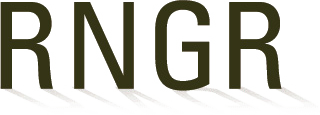
Artemisia (frigida)
|
Carol and Jerry Baskin Professors University of Kentucky University of Kentucky Lexington, Kentucky 40506-0225 seedlings.uidaho.com |
| Family Scientific Name: | Asteraceae | ||
|---|---|---|---|
| Family Common Name: | Sunflower family | ||
| Scientific Name: | Artemisia frigida Willd. | ||
| Common Name: | Fringed sagewort | ||
| Species Code: | ARTFRI | ||
| General Distribution: | A. frigida is found from Siberia and Alaska south to Idaho and Arizona. | ||
| Propagation Goal: | plants | ||
| Propagation Method: | seed | ||
| ProductType: | Container (plug) | ||
| Time To Grow: | 0 | ||
| Propagule Processing: | Seeds exhibit physiological dormancy. | ||
| Pre-Planting Treatments: |
Seeds are placed in cold moist stratification during winter. Germination occurs at 10 C. Germination was greater in light than dark. In Sabo's study germination was equal in light and dark under 24/15C alternating temperature cycle. |
||
| References: |
Bai, Y. and Romo, T. (1994). Germination of previously buried seeds of fringed sage (Artemisia frigida). Weed Sci. 42, 390-397. Bai, Y., Romo, J. T. and Hou, J. (1996). Phytochrome action in seed germination of fringed sage (Artemisia frigida). Weed Sci. 44, 109-113. Sabo, D. G., Johnson, G. V., Martin, W. C. and Aldon, E. F. (1979). Sabo, D. G., Johnson, G. V., Martin, W. C. and Aldon, E. F. (1979). Germination requirements of 19 species of arid land plants. USDA For. Serv. Res. Pap. RM-210. Table 10.22 In: Baskin, C.J. and Baskin, J.M. Seeds: Ecology, Biogeography and Evolution in Dormancy and Germination, Academic Press, 1998. Chapter 10: A Geographical Perspective on Germination Ecology: Temperate and Arctic Zones, pages 331 to 458. |
||
Citation:
Baskin, Jerry M.; Baskin, Carol C.. 2002. Propagation protocol for production of Container (plug) Artemisia frigida Willd. plants University of Kentucky Lexington, Kentucky. In: Native Plant Network. URL: https://NativePlantNetwork.org (accessed 2025/10/16). US Department of Agriculture, Forest Service, National Center for Reforestation, Nurseries, and Genetic Resources.



